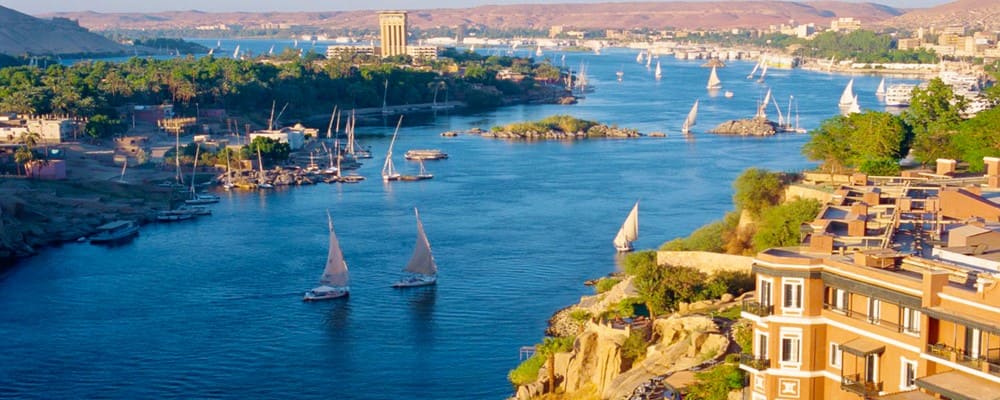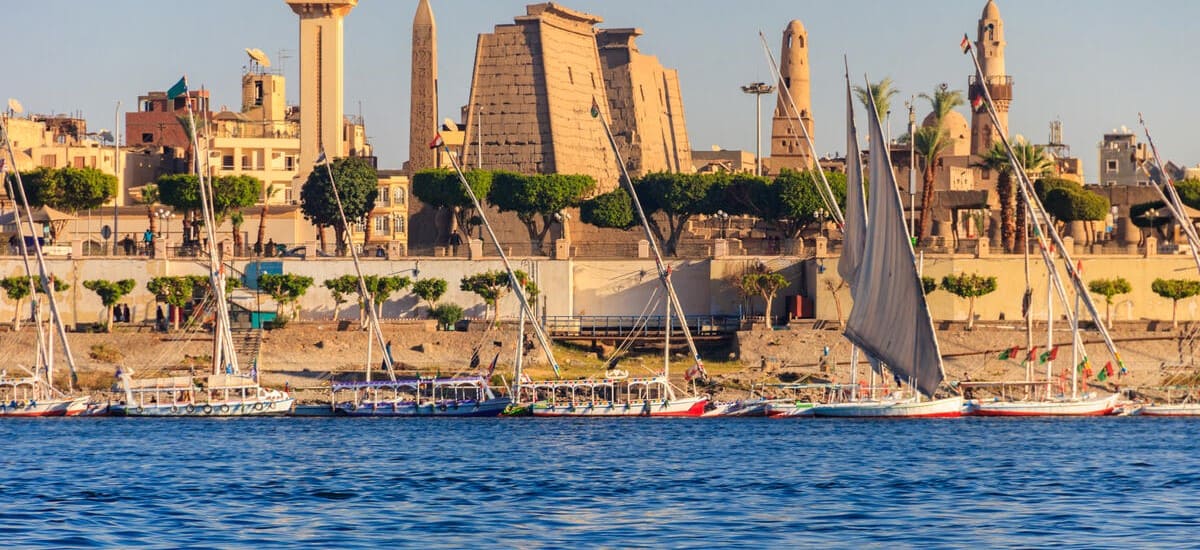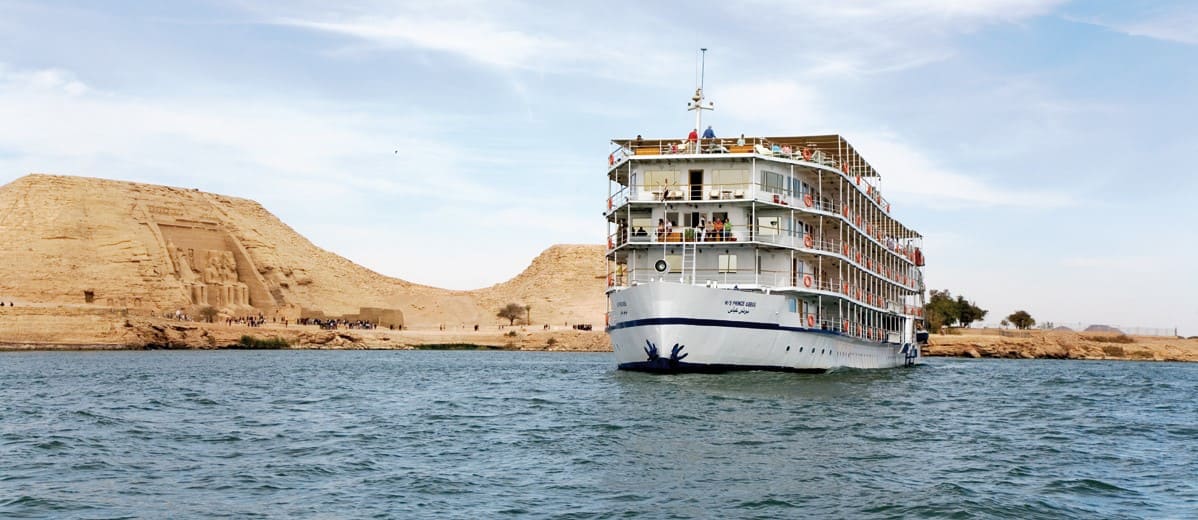The Nile River: the longest river on Earth
The River Nile is known as the longest river in Africa and has historically been considered the longest river in the world, followed by the Amazon. It covers a distance of 6695 kilometers. It flows north from the Great Lakes of Africa, crosses the Sahara Desert, and finally flows into the beautiful Mediterranean Sea. The Nile is associated often with Egypt, but in fact, it flows through 11 countries: Tanzania, Uganda, the Democratic Republic of the Congo, Rwanda, Burundi, Ethiopia, Kenya, Eritrea, South Sudan, Sudan, and Egypt.
The River Nile has two major tributaries: the longer White Nile, considered the prime stream and headwaters; and the Blue Nile, which carries about two-thirds of the river’s water volume and most of the silt. The White Nile begins at Lake Victoria, Africa’s largest lake, which touches the countries of Uganda, Kenya, and Tanzania. The Blue Nile begins at Lake Tana in Ethiopia and flows into Sudan from the southeast. The two tributaries meet in Sudan near the capital of Khartoum before continuing northward toward the Mediterranean Sea.

The Nile has left its mark on human history and continues to do so even in the present day. The Nile River provides economic stability for Egypt and the whole Egyptians. After all, millions depend on it to live. For a lot of people, the river provides essentials like food, fresh water, and transportation. It provides also new projects, such as the High Dam, which was built in 1970 to help regulate the Nile’s flooding and provides Egypt with a great amount of electricity to run up machines. The second project is Lake Nasser, which is the second largest man-made lake in the world and attracts tourists from around the world.
The Nile in Ancient Egypt
As an unending source of sustenance, the Nile played a crucial role in the founding of Egyptian civilization. Bordering lands were extremely fertile due to periodic flooding and annual inundation. The Egyptians were able to cultivate wheat and other crops, providing food for the population and trade. The Nile itself was also a convenient and efficient means of transportation for people and goods.
The Nile was an important part of Egyptian spiritual life. They believed that it was the pathway between life and death. For this reason, they built all tombs on the west side of the Nile. Egyptians believed the west bank was the place of death since the sunset in the west. It was associated also with many gods and goddesses, all of whom the Egyptians believed deeply intertwined with the blessings and curses of the land, weather, culture, and abundance of the people. Among these gods were; “Hapi”, the Nile god, who was the god of the annual flooding of the Nile, and Sobek, who was associated with the Nile crocodile.
Nile River Facts

River Nile is also credited for the civilization of Egypt. It is a vital source of life for numerous Egyptians in particular. More than 95 percent of the Egyptian population relies on the river’s water. It provides drinking water and a source of irrigation for crops. The rich black soil has been used to grow cotton, wheat, and other crops that are for export. One of the most notable Nile plants is papyrus, an aquatic flowering sedge that grows as tall reeds in shallow water and is used to make paper as well as cloths, cords, mats, sails, and other materials.
The River played also a vital role in the building of the Pyramids. The ancient Egyptians used the river water as the means of transportation for accumulating and gathering the stones and blocks for the pyramids. The Nile River was also a weapon that protected Egypt from the upcoming water war. Egypt without the Nile is just a desert.
Things to Do in the Nile River

The Nile is a much-loved tourist destination for people visiting Egypt. The best thing to do while being close to the Nile River is to have a Nile cruise tour. It allows you to explore an amazing world related to the great Ancients and experience the breathtaking view of the Nile firsthand. Have a Nile Cruise from Aswan to Luxor to discover the great Valley of the Kings, Hatshepsut Temple, Colossi of Menon, and the astonishing Karnak Temple. Or you can have a Nile Cruise from Luxor to Aswan to see the amazing Nubian life portrayed in the Unfinished Obelisk, Philae Temple, and the Great High Dam.
If you are thinking of going on a Nile cruise tour, don’t miss the chance and book one of our Nile cruises from here